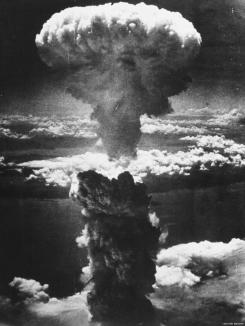Join us on Monday, January 10, 2022, at 11AM to discuss Djinn Patrol on the Purple Line, by Deepa Anaparra. The meeting will be held via Zoom. Contact Jean Demas, Literacy Librarian, at demasj@lislelibrary.org for details or to join our Booked for the Day Discussion Group.
Nagasaki: Life after Nuclear War by Susan Southard
October 8, 2016
On Monday, October 3rd, the Booked for the Day Book Group met to discuss, Nagasaki: Life after Nuclear War by Susan Southard. Here are a few things we discussed during the meeting:
- The consensus was that this was a difficult book to read, but incredibly well written and worthwhile. Everyone thought it was an important book to read and that it should be required reading for school.
- Everyone thought the pictures helped us to understand what was happening and it made the events more real. We thought the author’s decision to include this unforgettable documentation of the effects of the atomic bomb was the right one. The charts, showing important locations, made it easy to follow the long complex narrative. Some of the group wished they had more information on Hiroshima since they did comparisons at the end.
- We all thought Southard did an excellent job in proving her case against the use of atomic weapons. We were convinced that using a weapon that will inevitably inflict unimaginable injuries on children could never be justified.
- There was a difference in opinion if the bombs really ended the war. One member pointed out that in 1945, the Japanese government did not care about the welfare and basic human rights of civilian populations in the areas. She talked about the Rape of Nanking and the terrible retribution exacted against the Chinese people. After the first bomb was dropped on Hiroshima, the Japanese government failed to surrender immediately. Another member thought that given an appropriate amount of time they would have surrendered. Information that came in on Hiroshima left the Japanese government thinking loss was minimum.
- We discussed the fact that what happened there would never happen today with social media. Information would have been transmitted immediately.
- We were surprised to learn that information about the bomb and its effects was censored by the American administration occupying Japan. Even more surprising was that fact that John Hersey’s description of the Hiroshima bomb in The New Yorker was banned in Japan.
- We were equally surprised that the Commission charged with studying the health impact on survivors examined the hibakusha, photographed them, collected blood samples, but did not treat them.
- We wondered how much was known about the radiation effects of the atomic bombs before the bombing of Hiroshima and Nagasaki. From what we read, studies were not done before the bomb was dropped as to its after effects.
- Lastly we thought that this is a book that we would recommend.
These are just a few things mentioned during the discussion. Please feel free to add any of your thoughts in the comment section.





Add new comment